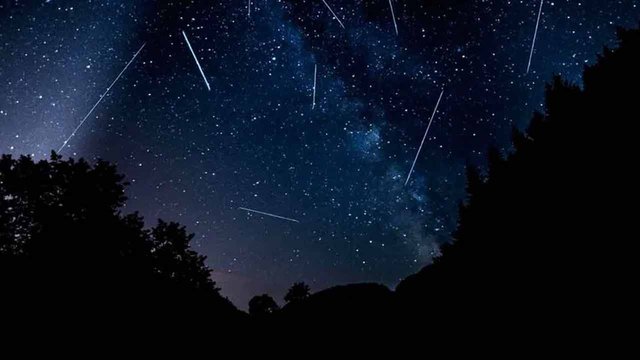This month, a double meteor shower will brighten the night sky

A momentous heavenly occasion has arrived for this present month, introducing a sight that is nowhere near regular. The evening of July 30th, we all will be in for a treat as not one, yet two yearly meteor showers light up the night sky at the same time.
The Delta Aquarids and the Alpha Capricornids will arrive at their pinnacle, offering an entrancing presentation of falling stars.
This intriguing event will offer stargazers an exceptional chance. They will observer a great number of meteors streaking across the sky. It will make the night essential.
To partake in the occasion, try to find a dull spot away from city lights. This will assist you with completely valuing the normal display.
Meteor shower secrets
The heavenly occasion will transcendently possess the southern sky. It will be a terrific sight for those in the Southern Side of the equator. Individuals in the southern scopes of the Northern Side of the equator can likewise appreciate it.
However, it very well may be a bit precarious to separate which falling star has a place with which heavenly body. These meteors will transmit out from various heavenly figures, like Orion, Perseus, and Gemini, making an entrancing and charming blend of lights overhead.
Each falling star streaks across the night sky. It adds its own special brightness to the vast showcase. Spectators watch in wonder of the universe's greatness.
Figuring out meteors
In the first place, we should explain some phrasing. Meteors, meteoroids, and shooting stars are frequently utilized reciprocally. In any case, despite the fact that each word alludes to exactly the same thing, they mean various phases of the space rock's excursion.
Meteoroids are little shakes made of metals zooming through space at mind blowing speed. At the point when they enter Earth's air, they as a rule travel somewhere in the range of 25,000 and 160,000 miles each hour (40,000 to 260,000 kilometers each hour).
At the point when meteoroids enter Earth's air, we then, at that point, call them meteors. Their rapid causes the rubbing that makes them gleam and produce the brilliant streaks across the skies that we know as "falling stars."
At last, in the event that a piece of these space rocks makes it the whole way to Earth's surface, we then call it a shooting star.
How meteor showers structure
Meteors and shooting stars come from our planetary group, generally starting their excursion in the space rock belt among Mars and Jupiter.
Some additionally come from comets. As comets draw near to the sun, they lose material, which can cause meteor showers when Earth crosses their way.
Types and sizes
Meteors and shooting stars vary in both size and organization.
Stony Shooting stars: For the most part made of silicate minerals
Iron Shooting stars: Fundamentally made out of iron and nickel
Stony-Iron Shooting stars: A blend of both silicate and iron
As far as size, meteoroids can go from minuscule residue particles to huge stones. Most meteors noticeable from Earth are somewhat little, as a rule weighing under a couple of pounds.
Superstars
The ritzy night starts with the unparalleled Southern Delta Aquariid meteor shower. The Aquariids, the more amazing of the two showers, are accepted to be remainders of the comet 96P Machholz.
The exhibition it makes is downright astounding - at the shower's pinnacle, one could observer up to 25 meteorites every hour, gave the sky is clear.
To get the best view, look towards the southeast area of the sky, where the star grouping Aquarius lies.
Nonetheless, you ought to observe that spotting Aquarius can be all in all a test. Indeed, even after broad aides and long stretches of star-planning, many actually think that it is troublesome.
Pay special attention to the star groupings Capricornus, Aquila, or Pisces. They encompass Aquarius and are more straightforward to recognize. When you find these, you realize you're looking in the correct heading.